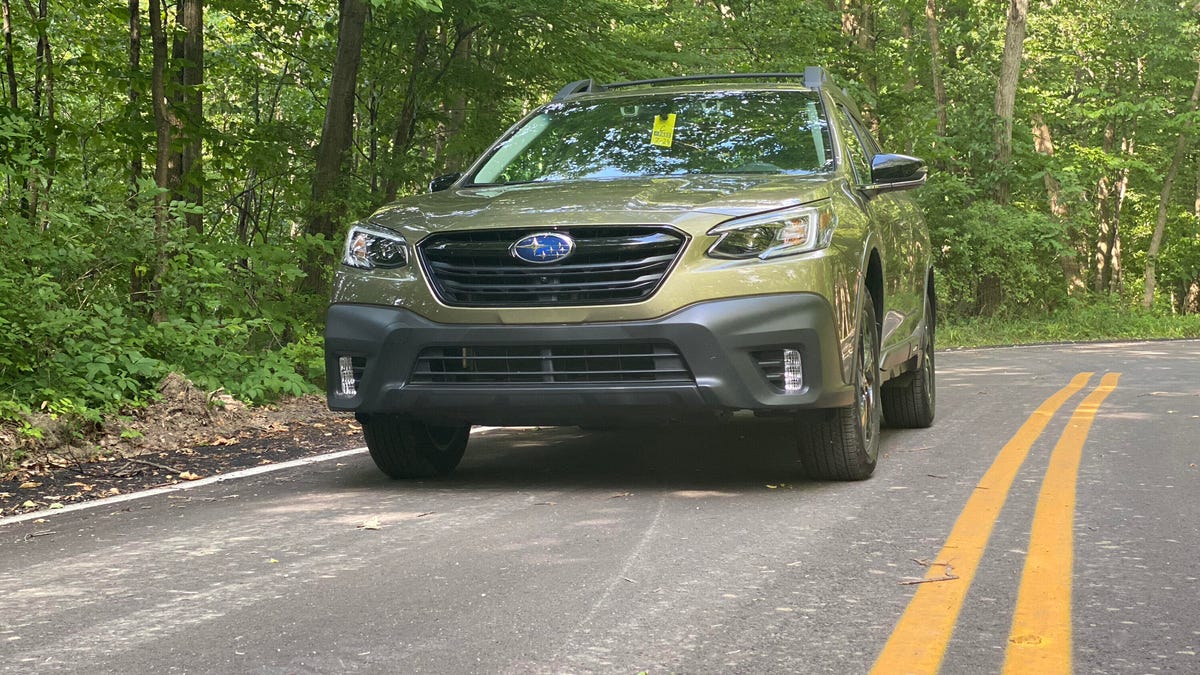2020 Subaru Outback long-term update: Delivering safety in spades
For the money, Subaru knocks it out of the park with the amount of active safety features included with the Outback.
For decades, car buyers viewed the concept of vehicle safety as a largely passive idea. Airbags, crumple zones and proper engineering are what kept passengers safe in the event of a crash. But in the past five years or so, we've focused a lot more on technologies that help prevent crashes in the first place. They boil down to two phrases: Active safety features and driver-assistance systems.
Subaru is doing its darndest to make its mass-market vehicles some of the best-equipped on the road for the price. And that's true of our long-term 2020 Subaru Outback Onyx Edition XT. Yes, our long-roofed wagon costs $37,995 as it sits, but the reality is the extra coin largely isn't spent on the active safety gear.
The adaptive cruise control with lane centering, automatic emergency braking and lane-departure warning are all standard, no matter which Outback you buy. It's called EyeSight and it's all over Subaru's feel-good ads about safety. The only two extra safety features packed into our Outback are blind-spot monitors bundled with a cross-traffic alert system and reverse automatic emergency braking. The former is standard on the Outback Limited trim and above, while the latter comes bundled with another options package we opted for when optioning this vehicle.
I've continued to drive our Outback in all the conditions ripe for this technology to do its thing. Knock on wood, I haven't encountered anyone worthy of a post in the Idiots in Cars subreddit. But while just going about day-to-day driving, the technology is always on alert. Again, I'm lucky I haven't needed to experience automatic emergency braking or its pre-collision alert. That's also a stellar thing, too. The system isn't too sensitive and doesn't think any car making a slow right-hand turn into a plaza is the end of me. It's smarter than that and it reduces the sense of annoyance that often comes when automakers jam too much in all at once.
That's not to say EyeSight is perfect, of course. In my experience, the Outback's cameras have a very difficult time picking up what's actually a center line in the road. For example, I am super thankful my city finally repaved a lot of major roads in the area. Some areas aren't great, though, and instead, we got some lame patchwork lines that run about three inches away from the solid yellow line on some roads. Very often, EyeSight mistakes this freshly done tar line as the final road marking. The mix-up creates a whole lot of active safety-related fireworks going off inside the car. Yellow lights flash, on-screen messages pop up and the bing-bongs make me feel like I'm a game show winner. I now know why my colleague Andrew Krok turned this feature off when he first took delivery of our Outback.
This cabin puts a lot of focus on safe keeping.
I have to give average marks to the adaptive cruise control and below average marks for the lane centering system that you can also engage along with it. The adaptive cruise control is perfectly fine and does its job, but it lacks the natural sensation of slowing found in other systems. Meanwhile, the lane-centering system is a little too abrupt, at least for my liking. In the past, it made some questionable judgements and one too many jerky maneuvers for at speeds over 65 mph.
It might not be perfect, but what's most important is that anyone today can go home with a new Outback for around $28,000 and they'll receive every technology I wrote about in this story. That's impressive for under $30,000, especially considering it wasn't that long ago when these convenience were exclusively reserved for luxury cars. I wouldn't call our humble Outback luxurious, necessarily, but it sure is trusty and that's what matters most.


